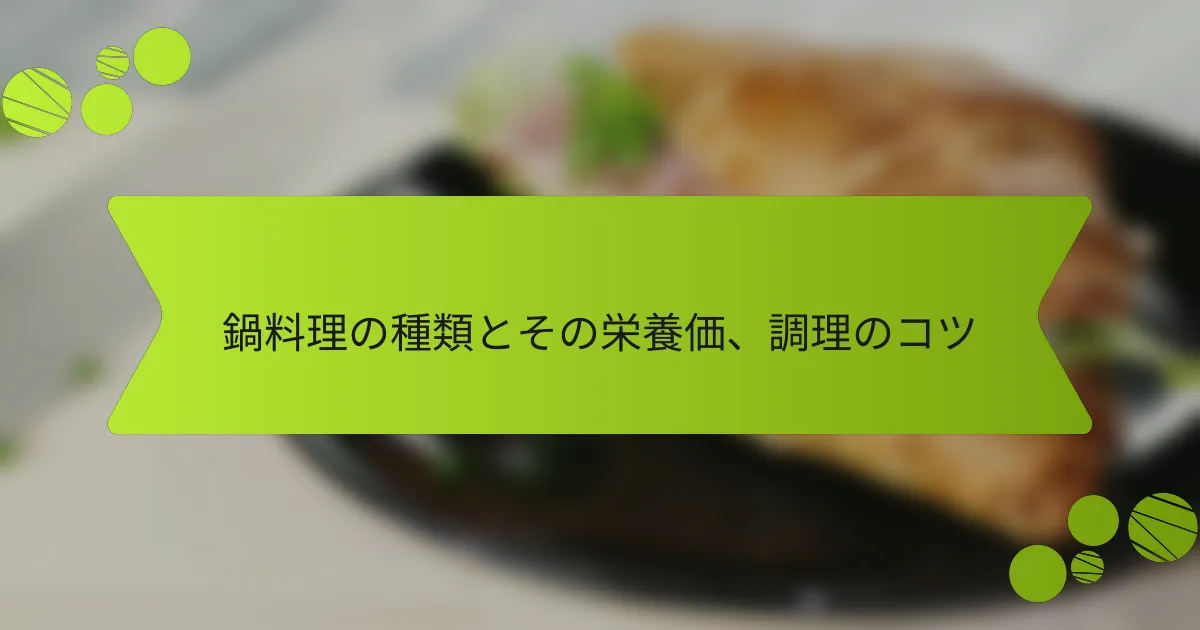Soba is a traditional Japanese noodle made primarily from buckwheat flour, known for its long, thin shape and versatility in both hot and cold dishes. This gluten-free option is low in calories and rich in nutrients, particularly B vitamins and dietary fiber, making it suitable for those with gluten sensitivities. The health benefits of soba […]

日本のレストランの健康効果: 精進料理と心身のバランス
Japanese restaurants offer significant health benefits, particularly through the practice of shojin ryori, or Buddhist vegetarian cuisine. This culinary approach emphasizes a balanced intake of nutrients, utilizing fresh vegetables and legumes to provide essential vitamins and minerals. Shojin ryori is low in calories while promoting satiety, contributing to both physical and mental well-being. The selection […]

横浜の中華街の料理の多様性と人気メニュー
Yokohama’s Chinatown is renowned for its diverse culinary offerings, featuring a wide range of Chinese dishes. Popular menu items include dim sum, gyoza, fried rice, and mapo tofu, all prepared using local ingredients and traditional cooking methods. Since its opening in 1859, Yokohama’s Chinatown has become a hub for numerous Chinese restaurants, attracting both tourists […]

居酒屋の提供スタイル: おすすめメニューと飲み放題の魅力
Izakaya, a casual dining style rooted in Japanese culture, emphasizes shared food experiences among patrons. Dishes are typically served in small portions, allowing guests to select from a diverse menu that includes popular items such as sashimi, fried foods, yakitori, and simmered dishes. The izakaya experience is further enhanced by all-you-can-drink options, providing guests the […]

鍋料理の種類とその栄養価、調理のコツ
Nabe, or hot pot, is a traditional Japanese cooking style that involves simmering various ingredients such as meat, fish, and vegetables in a communal pot. This cooking method enhances flavor by allowing the ingredients to meld together, making it a popular choice for family gatherings and celebrations. The article explores different types of nabe dishes, […]

味噌の種類と健康への影響
Miso is a fermented condiment primarily made from soybeans, widely utilized in Japanese cuisine. It is produced by fermenting soybeans with salt and koji, a fermentation starter, which can take several months to years. Various types of miso, including red miso, white miso, and blended miso, differ based on the soybeans used and the fermentation […]

しゃぶしゃぶの食材選びと調理法、健康への影響
しゃぶしゃぶ is a traditional Japanese hot pot dish that emphasizes the freshness of its key ingredients, which typically include thinly sliced beef or pork and a variety of vegetables. This dish is known for its nutritional benefits, offering a low-calorie, high-protein meal that is rich in vitamins and minerals, making it a popular choice for […]

ラーメン店の提供スタイル: スープの種類と麺の特徴
Ramen shops primarily determine their serving style based on the type of soup and the characteristics of the noodles. Common soup varieties include tonkotsu, shoyu, miso, and shio, with regional differences influencing their popularity, such as tonkotsu being predominant in Hakata ramen. Noodle characteristics, including thickness, shape, and texture, significantly affect the overall taste and […]

日本のレストランの健康効果: 食文化とストレス軽減
Japanese restaurants offer a diverse food culture that promotes health benefits. Dishes made with fresh fish and vegetables are highly nutritious, contributing to a reduced risk of cardiovascular diseases. Traditional Japanese cuisine is low in calories while providing a sense of fullness, and fermented foods enhance gut health. Additionally, communal meals with friends and family […]

和菓子の種類とその文化的背景、人気の食材
Wagashi are traditional Japanese confections made primarily from ingredients such as rice flour, sweet bean paste, and agar. These sweets are characterized by their beautiful appearance and seasonal themes, often reflecting Japan’s cultural heritage and natural beauty. For example, sakura mochi, a cherry blossom-themed wagashi, is commonly enjoyed in spring. Wagashi are typically paired with […]
